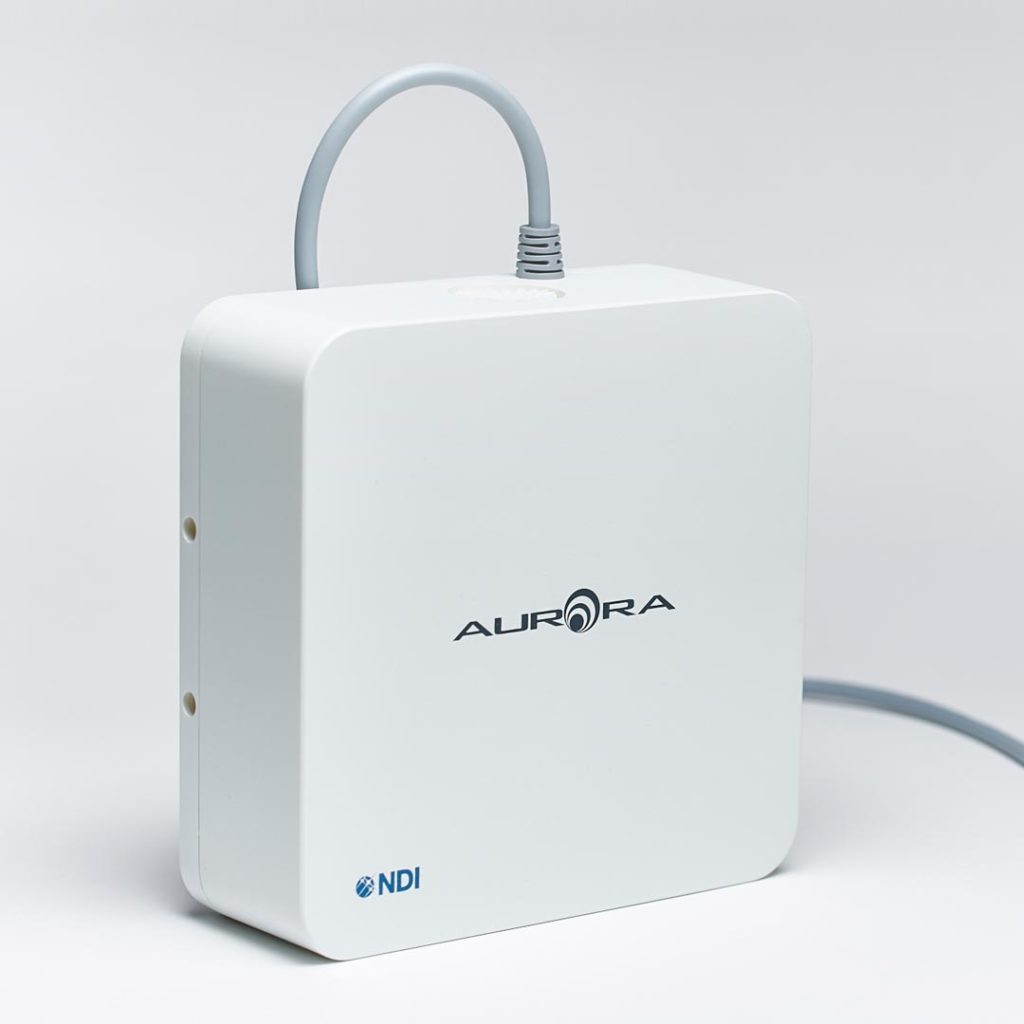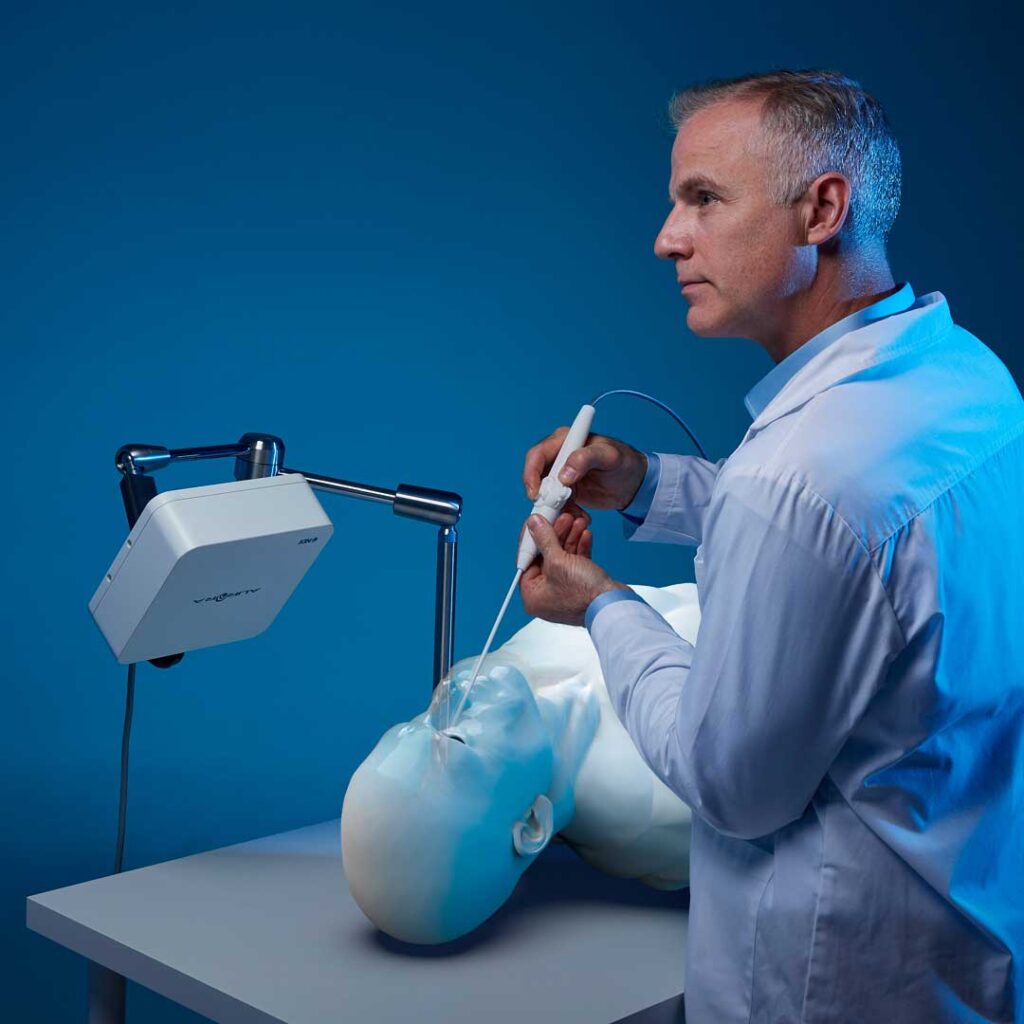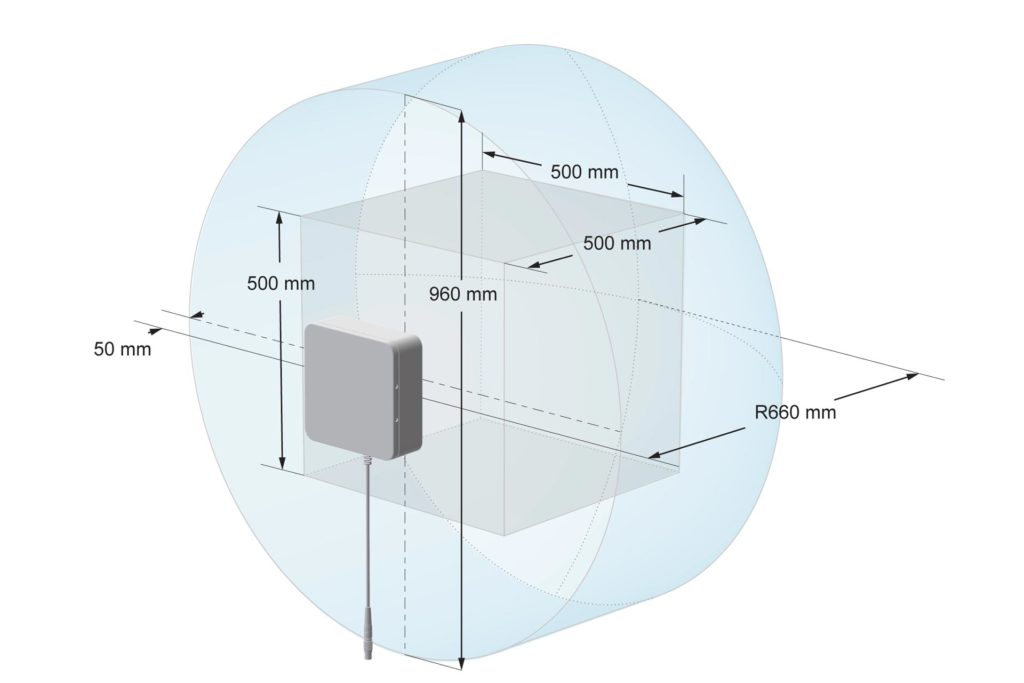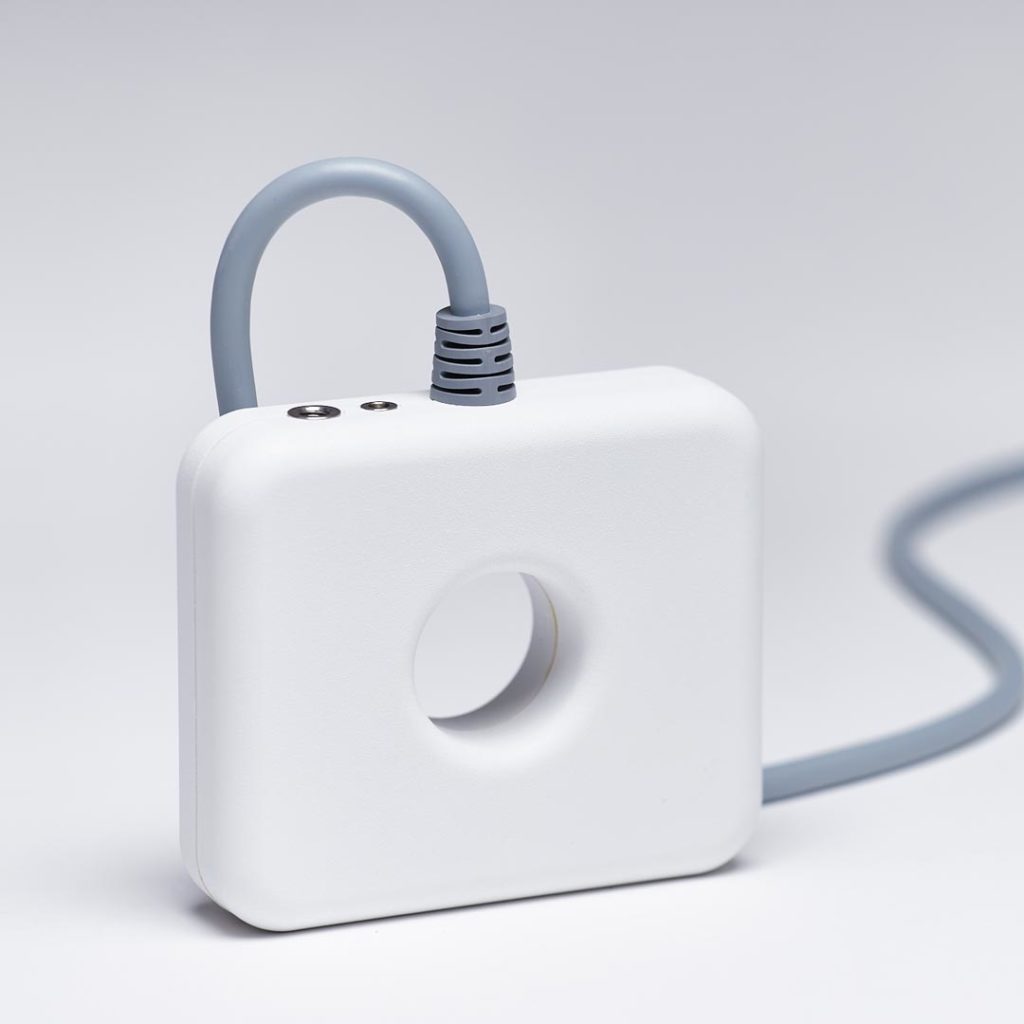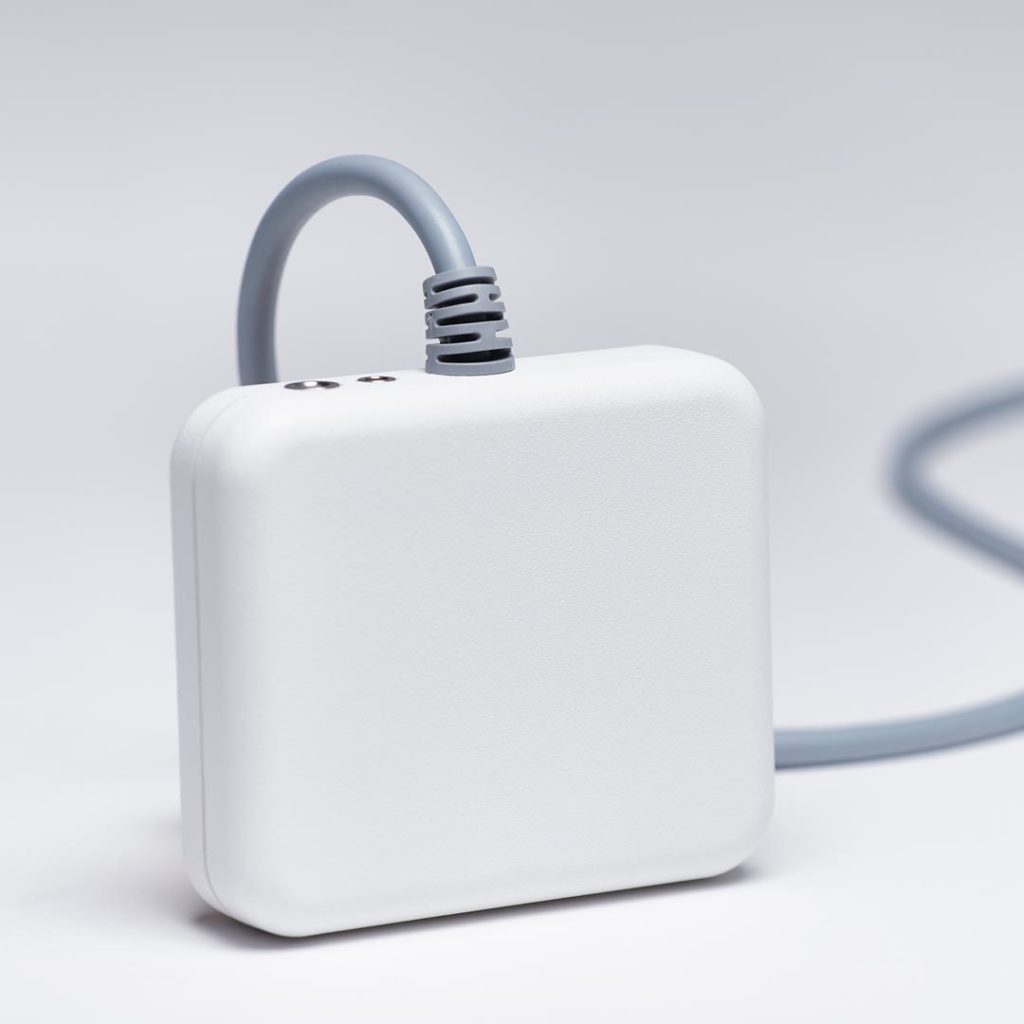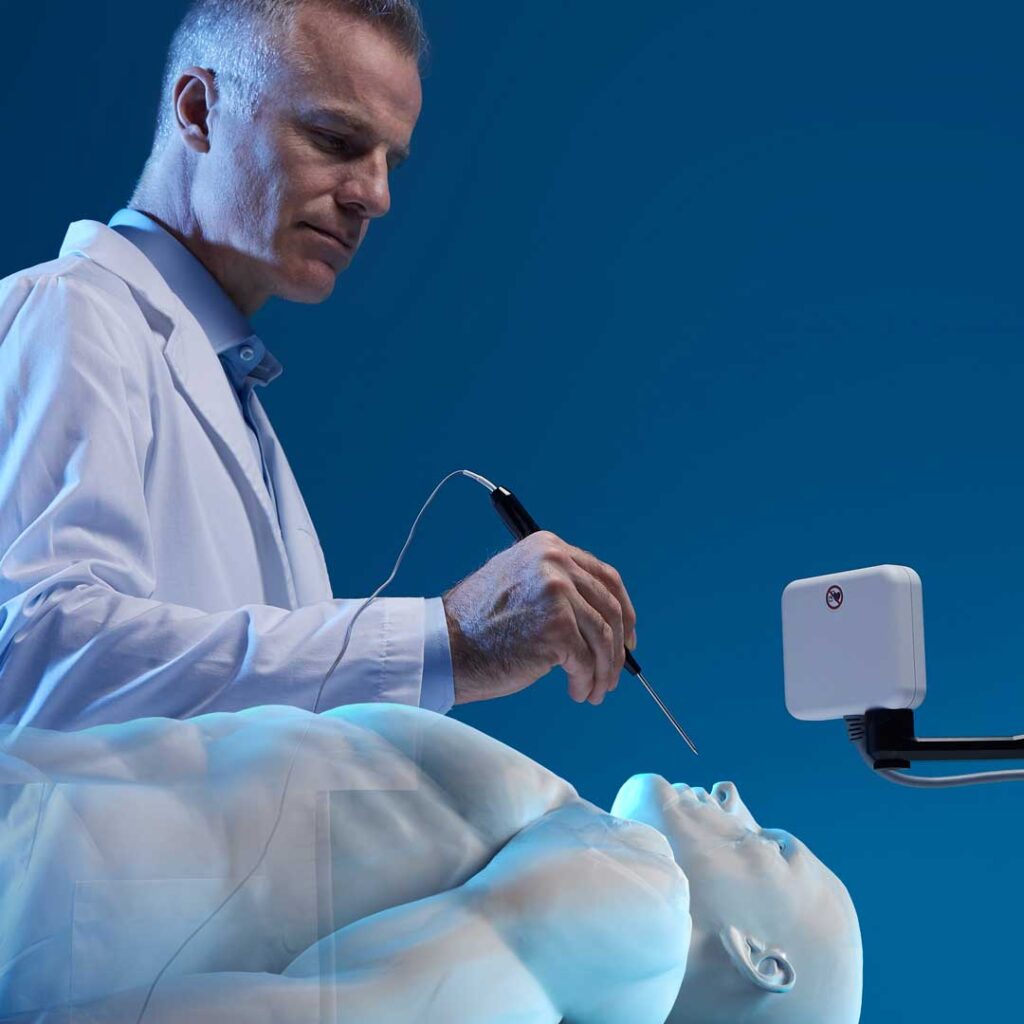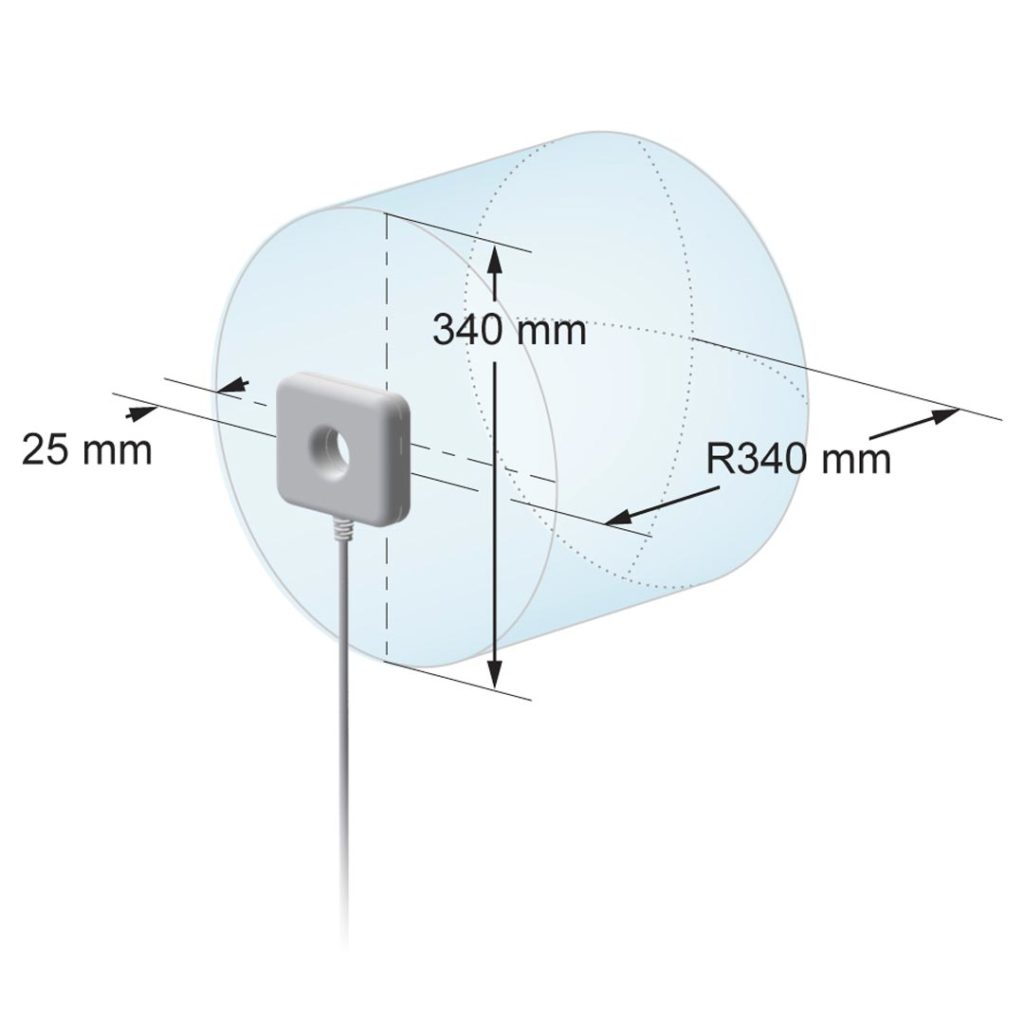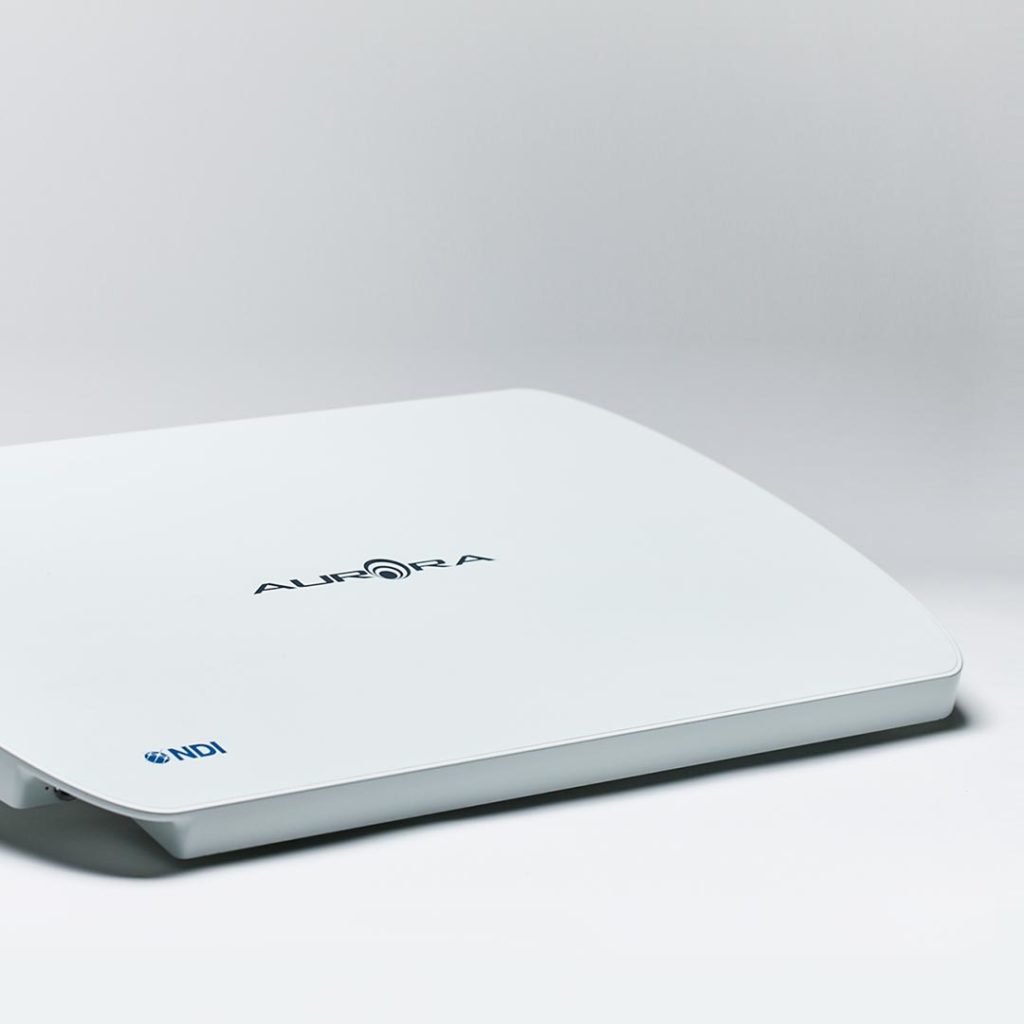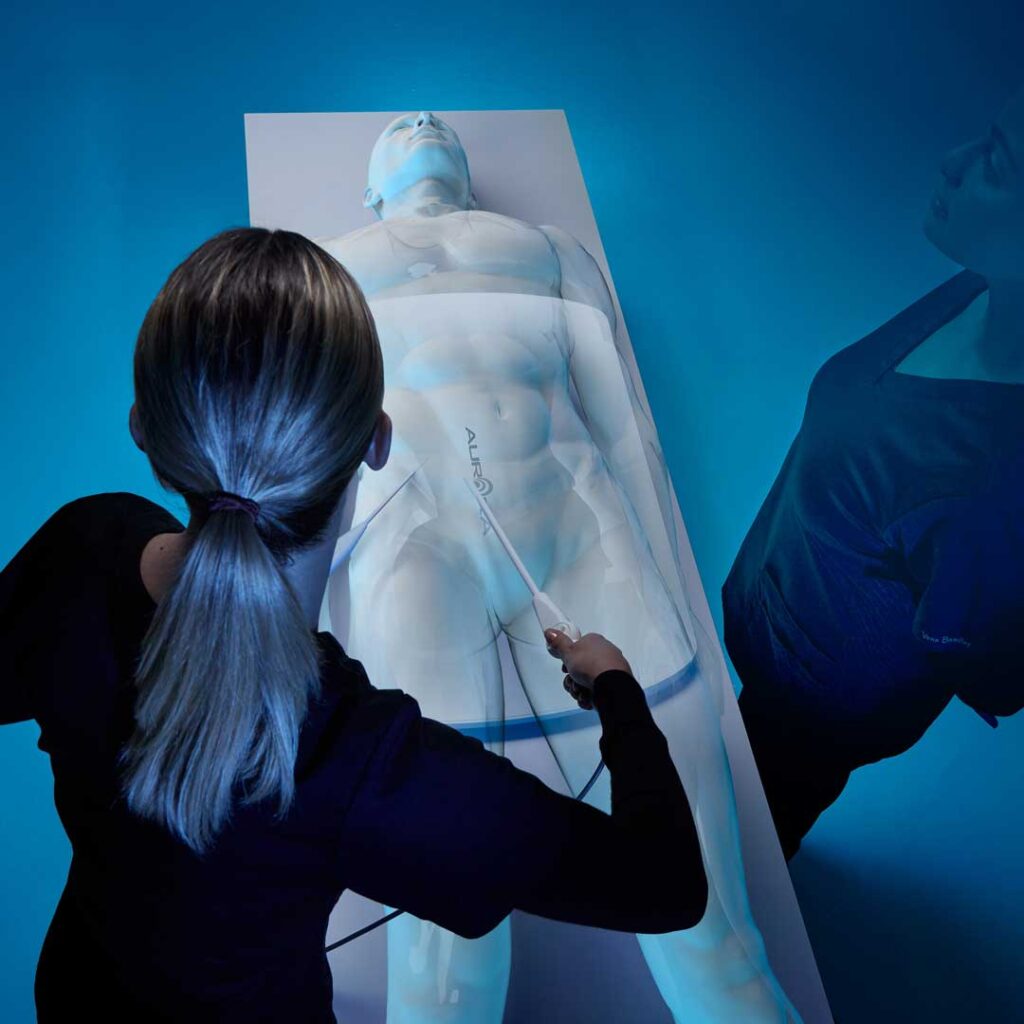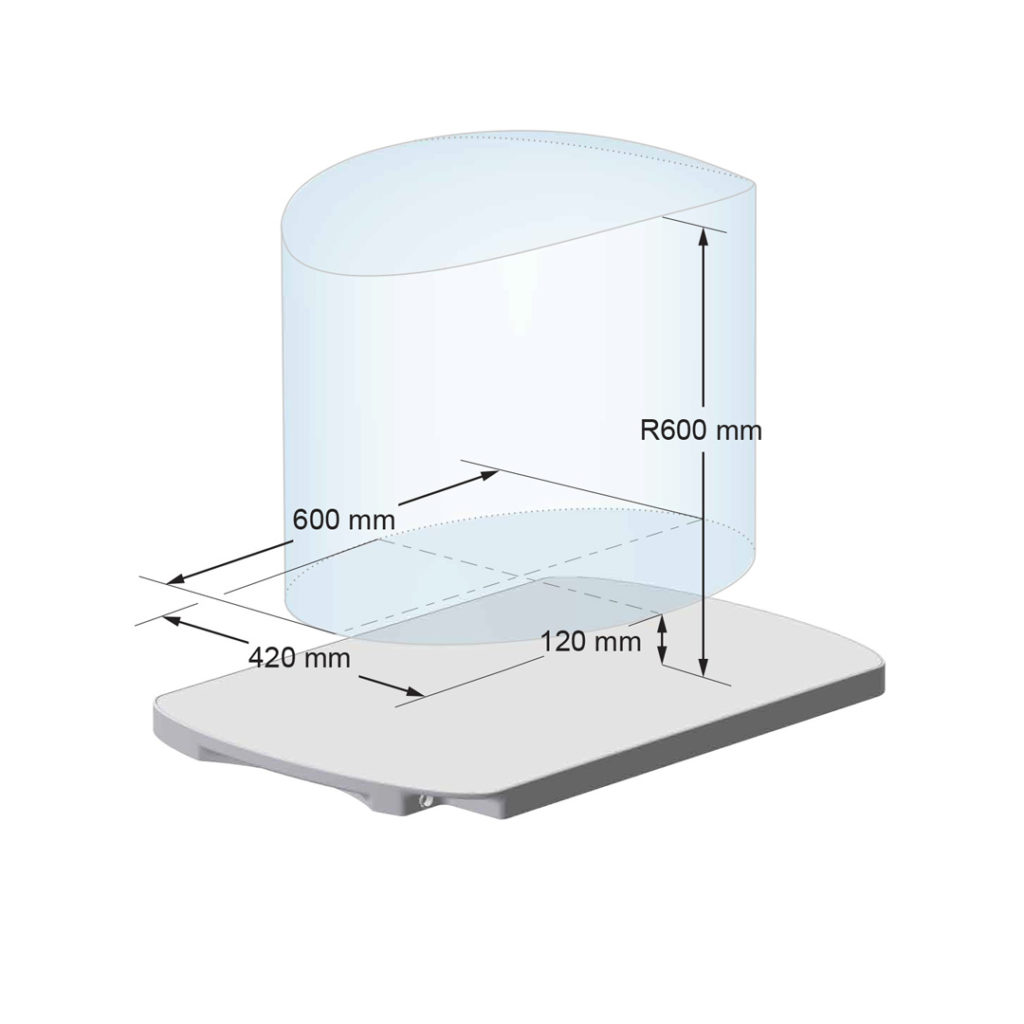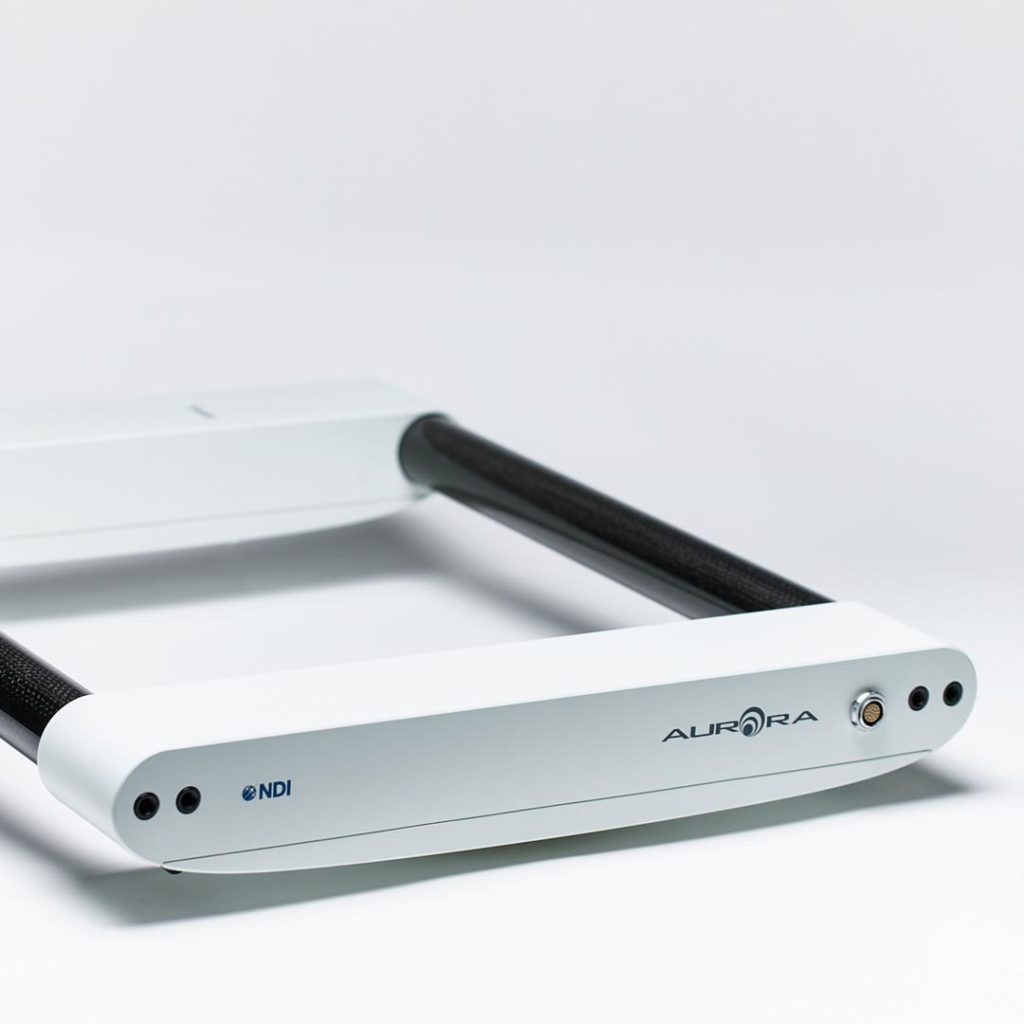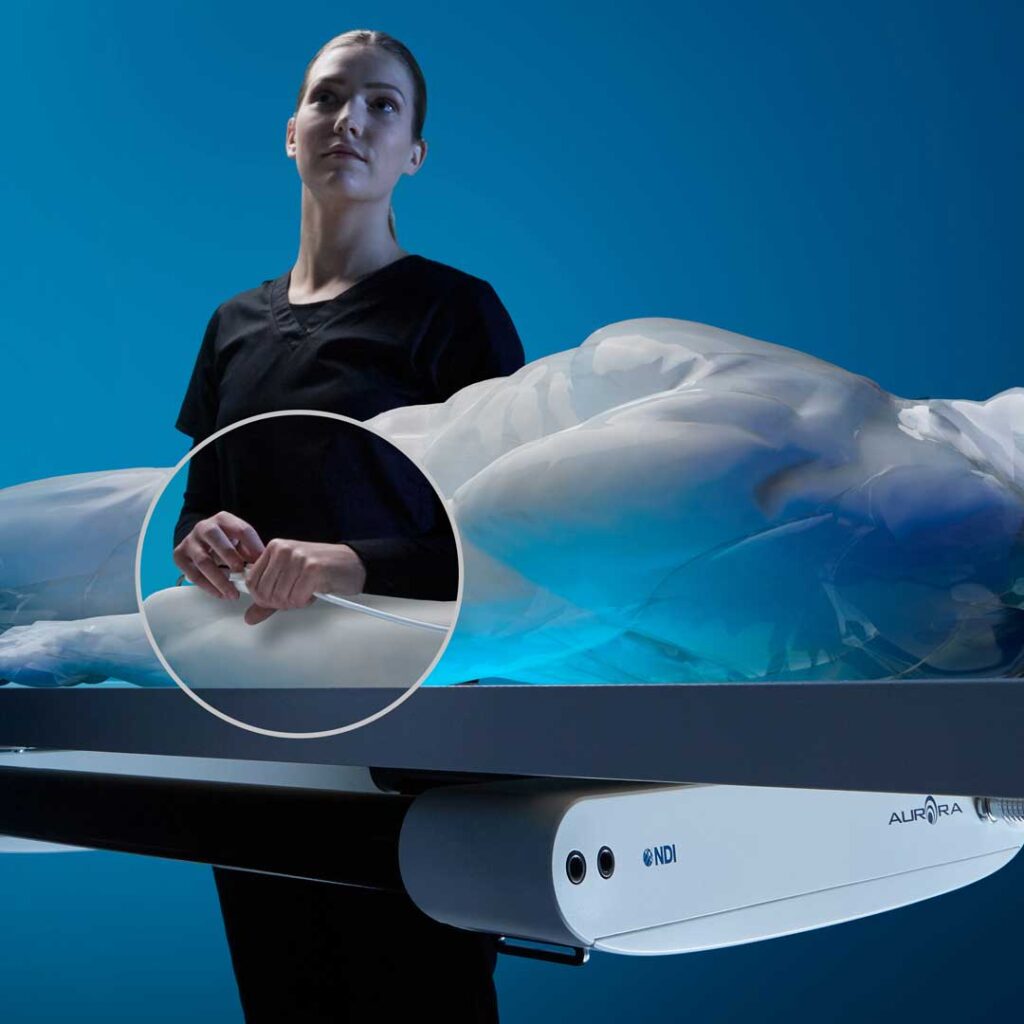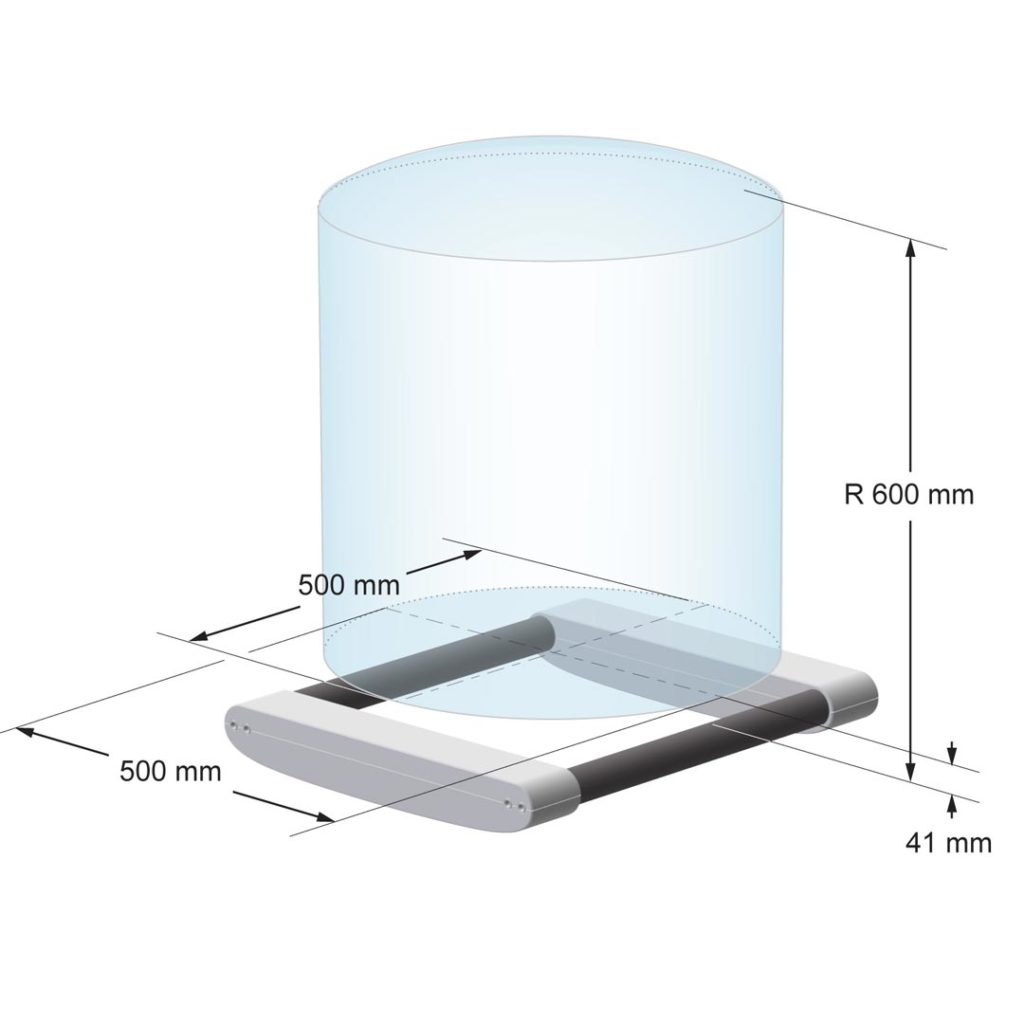Aurora Field Generators
Five different field generators provide versatile options for generating a measurement volume that is optimized to application workflows and the operative space.
Each FG has a Distinct Form Factor and Mounting Options
Aurora® Field Generators (FGs) emit a low-intensity, varying electromagnetic field that establishes the measurement volume in which the EM sensors’ positions and orientations are tracked. There are five Aurora FGs, each with a distinct measurement volume, form factor, and mounting options that can be applied to different OEM navigation system workflows and procedures, and set up within the operative space.
The Field Generator works in tandem with the Aurora System Control Unit, Sensor Interface Unit, and Aurora Sensors.
Planar 20-20 Field Generator
The Planar 20-20 FG is a versatile field generator with numerous mounting options that allow it to be easily positioned above or around the patient bed without impeding the physical workflow. The Planar 20-20 FG has the largest measurement volume of all Aurora FGs. This general-purpose FG is commonly used for OEM system navigation applications in interventional radiology, spinal surgery, and ENT surgery.
| Feature | Detail |
|---|---|
| Dimensions | 200 x 200 x 71 mm |
| Weight | 2.6 kg |
| Mounting Options | four M8 mounting holes, or mounting interface compatible with optional mounting arm |
Planar 10-11 & 10-11H Field Generators
The smallest Aurora field generators, Planar 10-11 and 10-11H have a small, lightweight, ergonomic design that allows handheld tracking of localized areas. The 10-11H version has a centre aperture (measuring ø34 mm) that enables the user to run an ablation needle or handheld drill through the FG. The Planar 10-11 and 10-11H FGs can be used in OEM system navigation applications in interventional radiology, and for the Planar 10-11H FG, orthopaedic trauma applications.
| Feature | Detail |
|---|---|
| Dimensions | 112 x 97 x31 mm |
| Weight | 650 g |
| Mounting Options | M6 screw mounting hole and 4 mm anti-rotation pin |
Tabletop Field Generator
The Tabletop FG measures just 3.4 cm thick, allowing it to be placed between the patient and the table. This unique placement removes any physical obstruction within the operative space and field of view. The Tabletop FG also incorporates a thin barrier that minimizes tracking distortions caused by conductive or ferromagnetic materials located below it. The Tabletop Field Generator is typically used in OEM system navigation applications in interventional radiology, pulmonology, and surgery.
| Feature | Detail |
|---|---|
| Dimensions | 507 x 762 x 34 mm |
| Weight | 13.3 kg |
| Mounting Options | placed directly on the patient table |
Window Field Generator
The Window Field Generator has an open centre that allows intraoperative fluoroscopy imaging through the FG. Accurate tracking is maintained without the introduction of imaging artefacts. The Window FG is fixed underneath a carbon-fibre table, removing any physical obstruction within the operative space or field of view. The Window FG is available in different operating frequencies: 800 Hz and 3200 Hz, known as the WFG II-8 and WFG II-32, respectively. Both feature high-performance emitting coils that can withstand repeated radiation exposure. The Window FG is commonly used in OEM system navigation applications in electrophysiology and endovascular surgery.
| Feature | Detail |
|---|---|
| Dimensions | 555 x 462 x 70 mm |
| Weight | 5.2 kg (WFG II-8) and 4.6 kg (WFG II-32) |
| Mounting Options | eight M8 tapped holes |
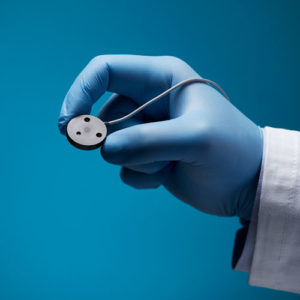
Download our 12-page Education Guide to learn how you can integrate Electromagnetic Tracking Technology into your OEM medical devices to:
- Navigate instruments safely and reliably through complex anatomy.
- Target small treatment areas with
sub-millimeter accuracy and precision. - Visualize real-time position as well as orientation of an instrument.
- Track instruments even when they
are out of sight. - Embed micro sensors into flexible and
rigid instruments.
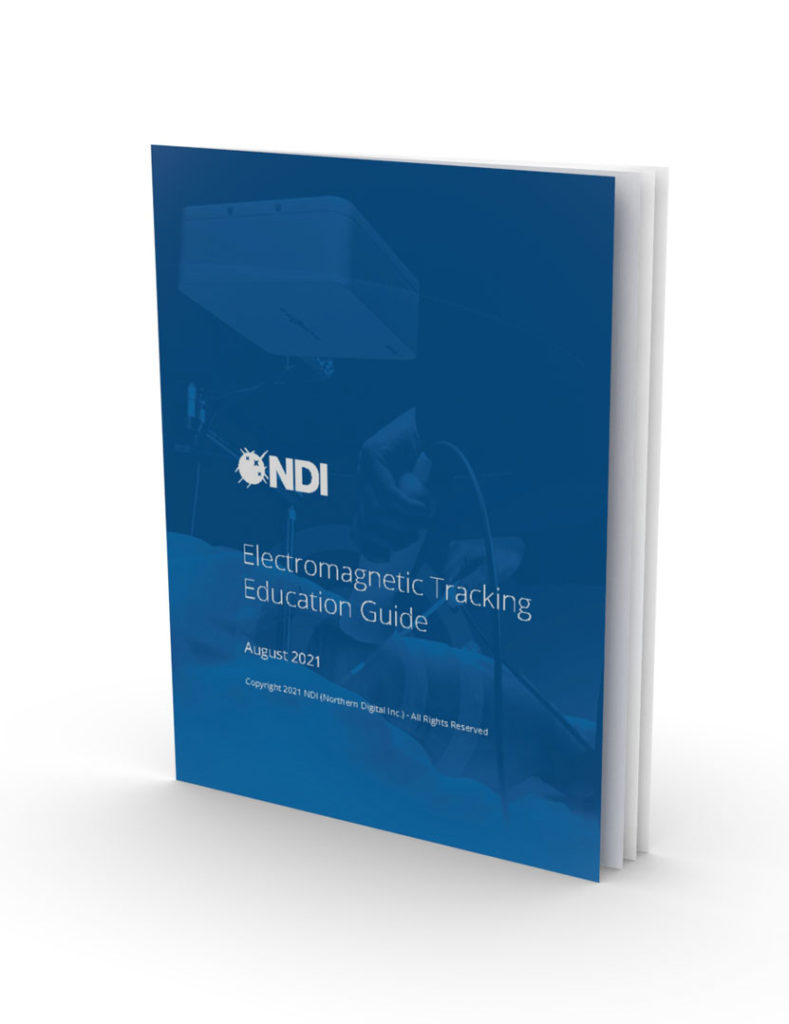
Legal Disclaimer
NDI tracking and measurement products are general metrology components that can be integrated into customer products, research experiments, and/or as components of medical devices that require precision measurement and tracking. While NDI components and technology can be integrated into original equipment manufacturer (OEM) medical devices, they are not specifically intended for a given application and, as such, have not been developed or manufactured in accordance with medical device standards. It remains the responsibility of the OEM customer or end-user to determine and test the suitability of NDI components and technology for their intended use, including performing any required ethics approval, verification, and validation required to demonstrate suitability and compliance. System-level testing, certification, and validation are the responsibility of the original equipment manufacturer or the applicable end-user and should be completed prior to the use of NDI products or technologies in any application.
